7 tips for decorating the bathroom with wallpaper: choosing and sticking
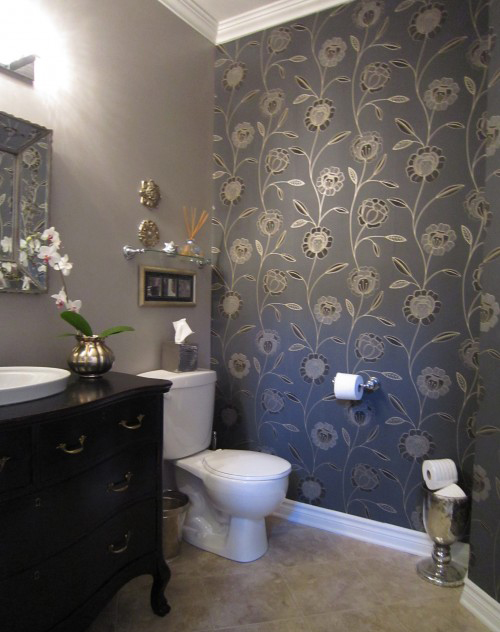
It is worth choosing the right type of wallpaper, and such a finish will bring many advantages:
- saving money and time, since any type of wallpaper will cost you much less than ceramic tiles, and sticking wallpaper is faster and easier than laying tiles;
- huge assortment possible drawings, colors, textures, patterns, which allows you to decorate the bathroom in accordance with the design idea, making it truly original;
- wallpaper is much easier not only to mount, but also to dismantle, if necessary. This allows, if desired, easy to change interior bathroom;
- high maintainability. The damaged part of the wallpaper is easy to glue, and you do not have to change the entire coating.

It is also worth noting that no matter how moisture-resistant the wallpaper is, it is still better not to use it in the shower corner. In this case, the most appropriate design option for the bathroom will be combination of two finishing materials. In all other cases, a competent choice of wallpaper will allow you to create not only a high-quality finish in the bathroom, but also an interesting interior.
Wallpaper for the bathroom, of course, must be moisture resistant: the packaging warns about this quality of the material three wave sign. Besides, glue must be waterproof, which must, in addition, withstand temperature extremes, have excellent adhesion, and have antifungal properties.
No. 2. What wallpaper is suitable for the bathroom?
From the above requirements for wallpaper, it becomes clear that paper-based wallpaper is in no way suitable for the bathroom. Under such conditions You can use these wallpapers:
- , as well as vinyl self-adhesive;
- other washable wallpapers, incl. and .
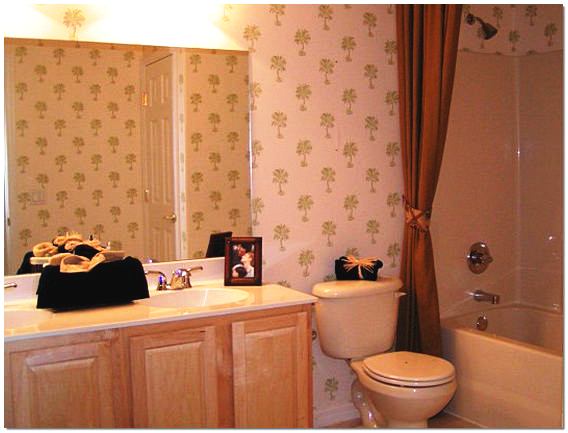
Number 3. Vinyl wallpaper for the bathroom: advantages and gluing
Vinyl wallpaper is one of the best wallpaper options for the bathroom. They perfectly tolerate contact with water vapor, temperature changes and even direct contact with water and prolonged contact with it. Ideal for bathroom conditions. In addition, such a coating is perfectly washed, and its appearance remains unchanged for a long time: it is not even afraid of direct sunlight. In addition, this type of finish is very diverse: you can find a color, shade, pattern and texture for every taste. But that's not all. Such wallpapers can even hide some of the imperfections of the walls in the bathroom, and they can even be used in new buildings, so this is a great replacement for ceramic tiles. This is a durable finish, the only drawback of which is not the lowest price. In addition, the material does not allow air to pass through, but you can also find on sale breathable vinyl wallpaper but they will cost much more.
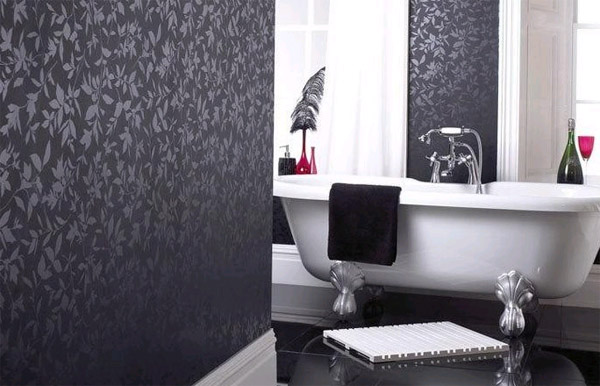
Presented on the modern construction market, there are several types. Best suited for bathroom conditions smooth vinyl wallpaper, which can be a worthy replacement for ceramic tiles. Despite the name, their surface is not always smooth, and may have some kind of embossed pattern. Hard vinyl wallpaper- the most modern material, which is breathable, can imitate the surface of leather, stone, wood.
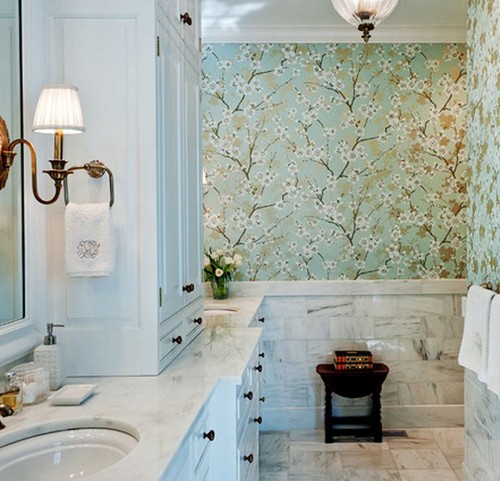
Sticking vinyl wallpaper should not cause any special difficulties, and consists of the following steps:
- surface preparation and alignment of large defects;
- wallpaper cutting into strips of the required length, taking into account allowances from above and below, as well as taking into account the comparison of the pattern, if any. The manufacturer indicates the necessary information on fitting the pattern on the package;
- gluing itself, and you also need to look for information on the features of applying glue on the packaging of the wallpaper, because some manufacturers provide for applying glue to the wall, others - to the wallpaper itself. Gluing is carried out end-to-end, it is better to work together, starting to glue the strip from top to bottom and simultaneously rolling the wallpaper with a roller to force out excess glue and air bubbles;
- wallpapers are glued end-to-end at a temperature of 20-24 0 C and in the absence of drafts.
You can simplify your task by buying self-adhesive wallpaper: it is enough to moisten them slightly with water and press them firmly against the wall.
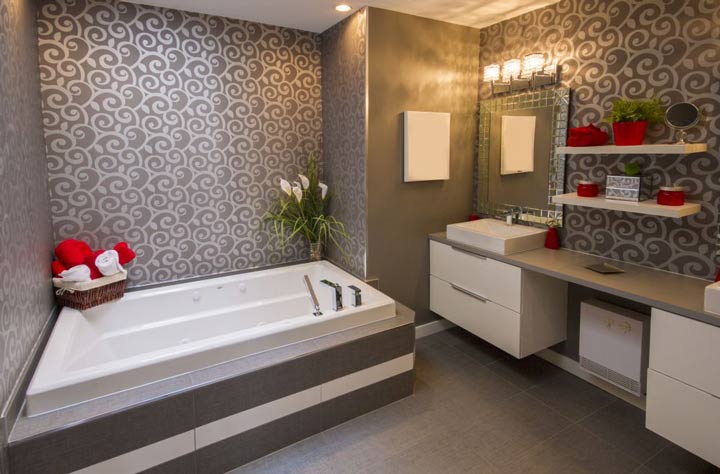
No. 4. Liquid wallpaper for the bathroom: features and installation
- Another great alternative to conventional ceramic tiles. Among their main advantages:
- complete immunity to moisture and water vapor;
- the simplest application process: it is unnecessary to cut the wallpaper, dilute the glue, etc. Liquid wallpaper is somewhat reminiscent of plaster in terms of installation features;
- the material perfectly passes moisture, which can be called a clear advantage in the bathroom. In addition, liquid wallpaper provides additional heat and sound insulation;
- the ability to create a unique interior with liquid wallpaper, because the material of different colors can be combined with each other.
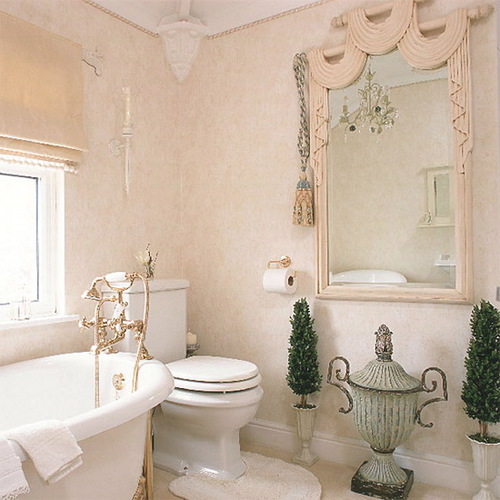
Experts advise cover liquid wallpaper after applying a layer of protective varnish to give them maximum moisture resistance. In terms of application, liquid wallpaper is quite simple:
- First you need to prepare the surface and primed. At the same time, you can start preparing liquid wallpaper by adding the amount of water indicated in the instructions to the dry mixture;
- apply wallpaper with a grater in an even layer 2-3 mm thick;
- after drying, you will be able to appreciate surface without seams. Also, don't forget to apply a protective coat of varnish.
No. 5. Bathroom cullet: features and gluing
They are made from glass melted and stretched into filaments, therefore the material itself is close in properties to glass, which, as you know, is not able to absorb moisture and change when interacting with it. Among others virtues fiberglass worth noting air permeability, but at the same time this material is not capable of becoming a place for the development of mold. This is a durable finish that can even strengthen walls, and wallpaper can be glued to any type of surface. Glass fiber is very durable, withstand contact with water, washing, but their most interesting ability is the possibility of staining, and several times. It will be very easy to update the situation in the bathroom, and the more explicit and deep the pattern on the surface of the wallpaper, the more times they can be repainted. Of the minuses, it is worth noting not the lowest cost, the need to carefully select paint that has detergent properties, and a small selection of patterns and patterns of glass.
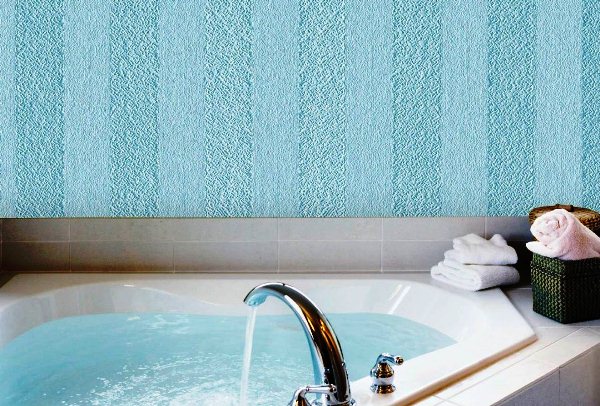
Sticking method glass wallpaper is not much different from vinyl wallpaper: the sequence of actions is the same, only it is better to choose the glue that is designed specifically for glass wallpaper. The paint is better to choose acrylic or latex, but the color or combination of them already depends on the preferences of each.
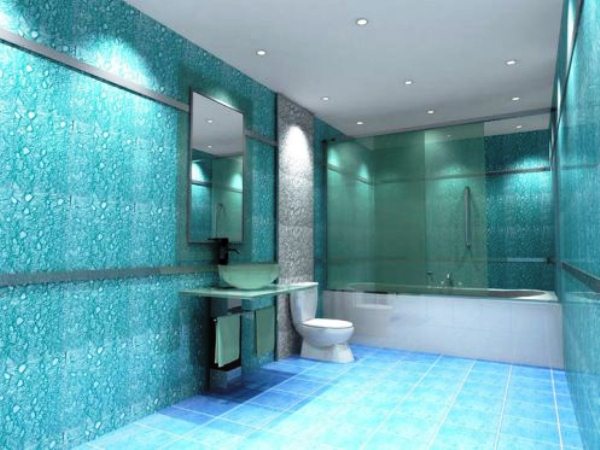
No. 6. What other wallpaper can be used in the bathroom?
Among others, and resistance to moisture, can be distinguished. They are easy to care for, create a beautiful sophisticated interior, are durable, are not susceptible to the development of fungus, and withstand contact with water. But before sticking them in the bathroom, you should think carefully, because this material is generally does not let air through, so the room will have to be constantly ventilated or equipped with a powerful one. Even if that doesn't scare you, it is better to finish only one wall of the room in this way: firstly, it will help create a favorable microclimate, and, secondly, it will deprive the room of unnecessary glare and make it stylish, not pretentious.
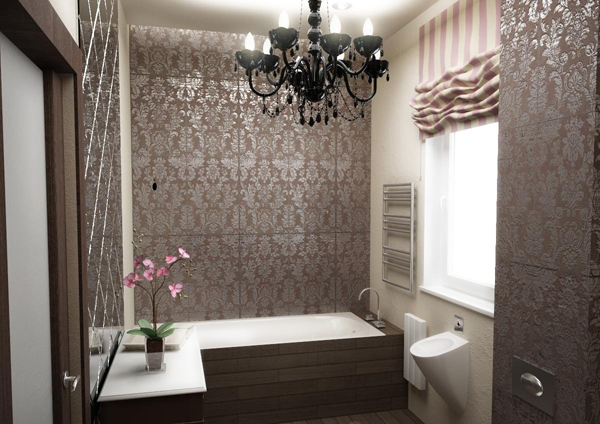
A bold enough decision would be to use in the bathroom photo wallpaper. They are able to make the room unique, visually expand the space, give it a distinctive atmosphere. , which have moisture resistant properties, which is indicated on the packaging, but even such material is better to glue on the wall that is located away from water sources. Sticking photo wallpapers requires maximum attention, because you need to accurately match the picture, and for this it is better to mark the wall. In addition, the surface must be perfectly flat, and the photo wallpaper on top is protected by a layer of varnish.
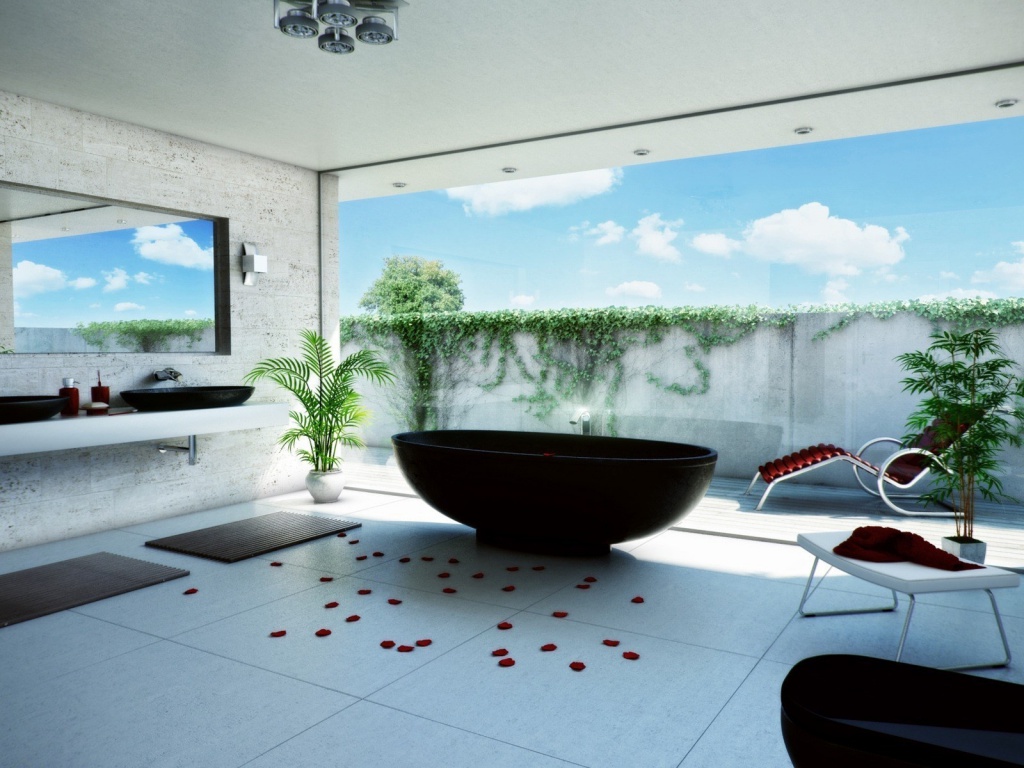
No. 7. What else to consider when choosing and sticking wallpaper in the bathroom?
Although many types of wallpaper are water resistant, they are still it is better not to use where they will be in direct contact with water: above the sink or above the bathtub, in the shower enclosure. It is better to use tiles in these places, which can simply be correctly combined with wallpaper, and then the interior will turn out not only practical, but also stylish.
When combining materials, you need to try to create one that is designed in the same style, so do not use too many shades and different patterns in the same room, and remember the basic properties of colors. Light shades visually expand the room, while bright and dark ones do the opposite, so the former are suitable for small bathrooms, and the latter for spacious ones to make them more comfortable.
It is also necessary to take into account the chosen room style. So, wallpaper with floral motifs is suitable for a Provence-style bathroom, wallpaper in light shades is suitable for a classic style, several bright colors can be combined in a pop-art interior, and for minimalism, choose discreet wallpapers using monochrome colors.
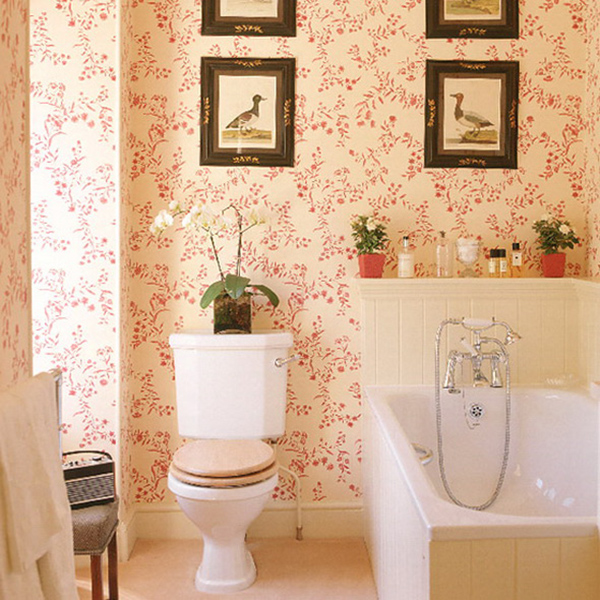
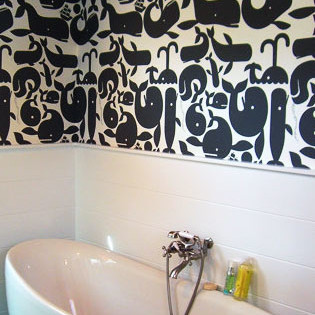
In conclusion
Wallpaper in the bathroom is a rather bold decision that will allow you to create a unique interior, but at the same time it will require you to be extremely careful when choosing materials and when organizing the interior. Really high-quality materials will allow you to create a unique interior, which at the same time will be no less practical than bathrooms completely finished with ceramic tiles. And yet, once again I want to note that the best option would be to combine wallpaper with tiles.






